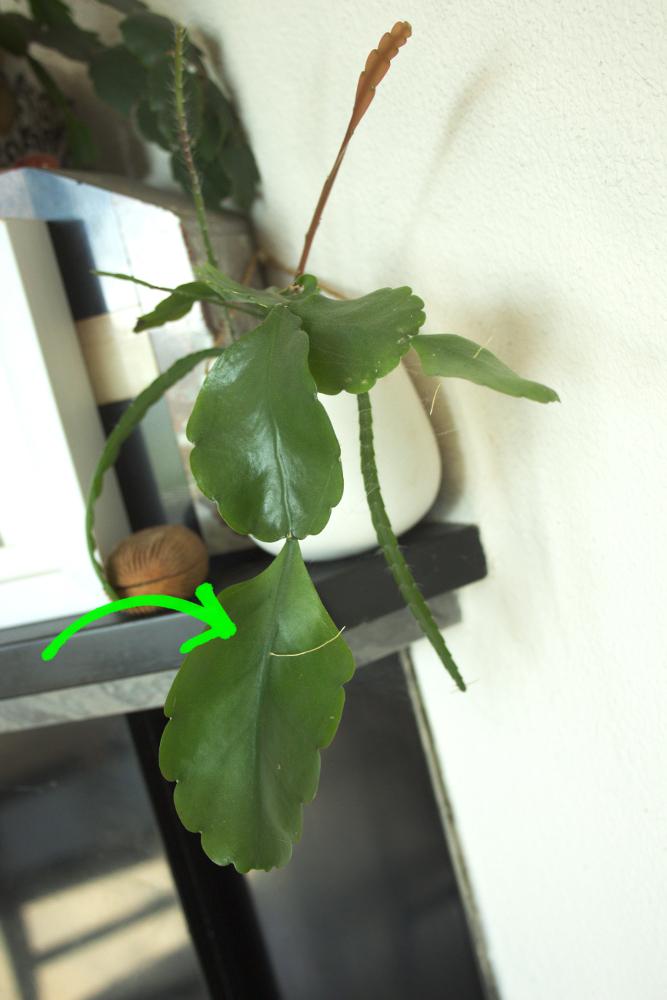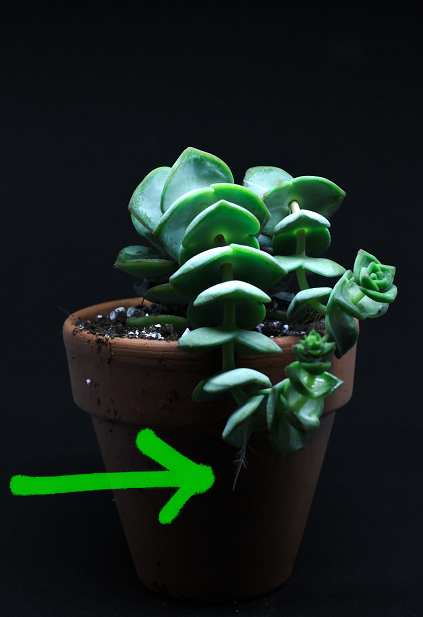A Guest Post
If you’re new to the wacky world of succulents, seeing one of your plants suddenly sprout roots from its above-ground stems can be alarming. Roots are supposed to grow in the soil, right? Well, yes, but in certain conditions, a succulent can decide it needs aerial roots.
What are aerial roots? Are they a sign your succulent isn’t doing well, and what causes them to sprout? Keep reading to find out the ins and outs of aerial roots on succulents.
What are aerial roots?
As the name suggests, an aerial root is not located in the soil but rather above it, reaching into the air. Like normal roots, aerial roots can absorb moisture and act to anchor the plant when they hit the soil.
As we’ll be discussing further below, succulents grow aerial roots to address a need that isn’t being met with just regular roots. As such, in many (but not all!) cases the appearance of aerial roots indicates that something is lacking for your succulent.

Kalanchoe with aerial roots emerging from the leaves
Why are my succulents growing aerial roots?
Your succulent is growing aerial roots because it’s looking for something.
This can mean something about the care you’re providing right now should be optimized, but in some cases, aerial roots are just a normal part of succulent growth.
A succulent like Kalanchoe that grows pups on the mother plant, for example, will be covered in aerial roots for much of the year.
This happens because the pups are looking to prepare themselves for the moment they fall off the leaf that sprouted them, and therefore means there’s nothing to worry about here.
What other causes of aerial root growth are there?
There are many specific triggers, which can be grouped into three main categories: the search for soil, water, or stability.
If you find your succulent producing aerial roots your mission is to figure out which category they fall in, in order to find out if you should be doing something or not.
If In search of soil
If your succulent is expecting a part of itself that wasn’t previously in contact with soil to be ‘touching down’ soon, it’ll often start producing aerial roots in anticipation of hitting the ground.
Examples of this are when plantlets are forming as we discussed in the introduction of this paragraph or when we’re dealing with a species that grows in a creeping fashion.
Additionally, even in normal circumstances, a succulent’s stems might not be able to take the weight of its (healthy) leaves, causing them to bend down and the plant to produce some aerial roots just in case it’ll need to anchor itself soon.
This can happen with Jade plants and rosette-forming species, for example.
In search of water
If your succulent is drying out too much on a regular basis, it will often sprout aerial roots in an attempt to absorb more water.
As we discussed earlier aerial roots can take in moisture just like normal ones: the only difference is that they absorb it from the air.
If the leaves on your succulent seem to be shriveling and you’re seeing aerial roots appear, consider whether you’re watering enough.
Changing seasons, lighting and temperature can mean a change in your watering schedule is required, so you’ll have to review whether it’s time to increase the amount of moisture you’re providing.
Succulents naturally grow in dry areas, but they do need more water than some might expect when they’re grown in a closed pot.
In areas with harsh sun and warm summers, some might need to be watered every couple of days during the height of the sunny season!
In search of stability
If your succulent is not receiving the amount of light it needs to thrive, it will stretch out in search of more sun. This process is referred to as etiolation and can result in a lanky looking plant with sparse leaf growth.
In addition to etiolation making a plant look less decorative, it also creates instability. Long stems can start to bend down when they weren’t supposed to, triggering the plant to start creating aerial roots in search for some much-needed stability.
If a previously full-looking plant is starting to look stretched and sprouting roots on its stem, you might need to consider if its current location is a little too dark.
Most succulents grow best in full sun, meaning they won’t appreciate being kept in the darker corners of your home!

Conclusion: are aerial roots bad?
As we can conclude from the above, aerial roots aren’t necessarily bad. They just mean your succulent is trying to fulfill a need. This need can be natural (in ground-covering plants and plants that grow pups) but it can also be caused by a care issue (etiolation, lack of water).
In order to figure out whether aerial roots on your succulent are indicative of a problem, you’ll have to try and figure out why they are being produced. Have a good look at the plant to determine if it’s looking sparser than usual or if it’s appearing thirsty.
If you do conclude that it’s time to change something in the care you’re providing, be sure to take things slow.
All plants like stability and even if it’s a good change, they don’t respond well to sudden shifts in their environment and care.
Slowly increase watering if you find it’s necessary, and don’t move a succulent from a shady spot into full sun without an acclimation period.

